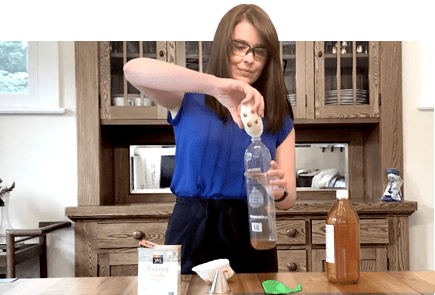Have you ever wondered how skyscrapers can be so tall? Or how people build bridges to span long distances? We use engineering to come up with ways to build tall, long, and sturdy structures.
Background
The first building that was considered a skyscraper was the Home Insurance Building in Chicago, Illinois. It was built in 1885, and stood until 1931. It was considered a skyscraper because it was the first building to use steel and concrete as its foundation and structure. However, people have been building tall towers since 300 BCE! The lighthouse of Alexandria was about 330 feet tall and stood from 280 BCE until 1480 CE. In this activity, you won’t have to create something that big, but if you want to look at how those structures were designed, they might inspire your creation using only marshmallows and uncooked spaghetti.
Key Concepts
- A box of uncooked spaghetti
- A bag of marshmallows (small or standard size)
- A ruler
- A place to work that can get messy
Materials
- A box of uncooked spaghetti
- A bag of marshmallows (small or standard size)
- A ruler
- A place to work that can get messy
Preparation
- Make sure you have a clean workspace, and open up the spaghetti and the marshmallows.
- Your goal is to create a marshmallow and spaghetti tower that is at least 6 inches tall from base to top. Take a moment to think about what the best way to do this will be. What will help the tower be sturdy? What will help it be stable?
- Use the marshmallows as joints, and the spaghetti as beams, and try to build the tallest tower that you can. Use your ruler to measure how tall you are building.
Observation and Results
- What happens when you use a square base vs. a triangle base?
- What happens as the tower gets taller?
- What happens when you use shorter spaghetti?
- What are some of the ways you could strengthening your tower using other materials?
You will probably find that the most effective towers have wide, sturdy bases, use shorter pieces of pasta, and use triangles and pyramids as support structures. Triangles are a great structure to make, because they are the only shape where you cannot change the angles that the sides make without changing the length of the sides. This makes them very sturdy and able to support things well. Having a wide base gives the tower lots of stability and allows for better weight distribution.
Try adding a challenge for yourself by creating your tower for a specific purpose. Can you make a tower that holds an egg 6 inches off the table? How about a book? How tall can you make a tower using only unbroken pieces of spaghetti? Keep experimenting with different ways to build.
Make sure to clean up when you are done. Compost or throw away the marshmallows and pasta, and clean up your workspace.
Safety First and Adult Supervision
- Follow the experiment’s instructions carefully.
- A responsible adult should assist with each experiment.
- While science experiments at home are exciting ways to learn about science hands-on, please note that some may require participants to take extra safety precautions and/or make a mess.
- Adults should handle or assist with potentially harmful materials or sharp objects.
- Adult should review each experiment and determine what the appropriate age is for the student’s participation in each activity before conducting any experiment.
Next Generation Science Standard (NGSS) Supported - Disciplinary Core Ideas
This experiment was selected for Science at Home because it teaches NGSS Disciplinary Core Ideas, which have broad importance within or across multiple science or engineering disciplines.
Learn more about how this experiment is based in NGSS Disciplinary Core Ideas.
Engineering Design (ETS)1: Engineering Design
Explore Additional Science at Home Videos and Activities

Make Your Own Cotton-Ball Launcher
What can a rubber band and a cotton ball teach you about potential and kinetic energy?
Join Michael Lewandowski to make your own cotton-ball launcher and find out!

C02 Balloon
Baking soda and acid reactions in baking make things puff and rise.
But how could you use this same chemical reaction to blow up a balloon?

Elephant Toothpaste
Join Camille Schrier, a scientist who was crowned Miss America 2020, as she shows you how to make a chemical reaction so big it’s fit for elephants!

